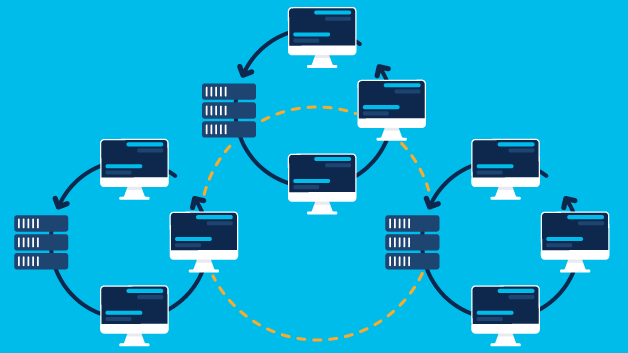
IT Certs
Let's get the latest news and stories about IT certs.
Study CCNA 200-301: WAN connectivity options
One element that attracted attention in the migration to the new CCNA 200-301 is the reduction of the chapter dedicated to WAN technologies to only one point in the title "Networking Fundamentals". In this sense, development on protocols such as Frame Relay, MPLS, PPP, PPPoE, etc. is no longer included. But this does not mean neglecting the subject during our preparation. One point that must be taken into account is that in this Cisco exam shows a new consideration of the different WAN technologies, not different but an evolution with respect to the mentions that were made in previous topics.
So head over to this post to review the different WAN connectivity options considered in the context of CCNA 200-301 and how they are organized or classified.

Traditional technologies
- Dedicated communication links
A dedicated line is a permanently established WAN communication link from the local CPE to the remote CPE through the service provider's network. It provides full-time services, without requiring link initialization procedures before starting data transmission. - Circuit-switched communications links
Operate on the basis of the establishment of virtual circuits that are dynamically generated to define dedicated temporary circuits between origin and destination. - Packet-switched communications links
These services aim at more efficient handling of the bandwidth available on the service provider's network.
In these packet layer networks, it is identified as belonging to a particular client and forwarded towards the destination based on that label. The frames are transported through the WAN network based on an ID located in the header of each of the frames since the transmission is carried out over a shared physical infrastructure establishing switched virtual circuits.
Emerging technologies
- MPLS A
technology defined by the IETF that establishes a label-based packet forwarding mechanism designed to achieve fast forwarding in the core of IP networks and that allows corporate networks to be scaled. It is a technology that combines the flexibility and stability of IP routing with the switching speed of layer 2 networks. It
allows to transport content of any protocol by transporting it in the data portion, it can be both IPv4 and IPv6 packets, Ethernet, DSL, etc.; enabling each corporate site to connect to the transport network with the necessary access technology.
When each packet enters the MPLS network the first MPLS router to receive it adds a label between the data link layer header and the IP header. That label is used by the transport network to forward the traffic to the exit point where the last MPLS router removes the label. This process is transparent to the corporate network and is implemented exclusively in the transport network of the service provider. - Ethernet over WAN
Ethernet is now possible to use as an access mechanism to the WAN network, maintaining the same frame format and interfaces that we already know.
At present different WAN services are offered using Ethernet: Metro Ethernet, Ethernet over MPLS, VPLS, etc. In these cases, all the sites that make up a corporate network operate as if they were connected to the same LAN switch. In this way, the different remote sites are in a single multi-access network and each site can connect directly with the other sites that make up the same WAN network using its own addressing space for routing. - Broadband Internet Access
Currently there are multiple broadband Internet access technologies that can be used on the corporate network. There are multiple possibilities of wired access either by fiber optic or copper cable; this type of connection tends to be permanent, dedicated, and with consistent capacity. Wireless connectivity solutions are also possible although they do not have the same consistency in capacity, error rates and latency.
Examples of wired broadband connections are DSL, cable modem, and fiber optic accesses. On the side of wireless access connections, the most frequent ones are accesses by cellular technology (3G / 4G / 5G) and satellite access services.
These are low cost solutions but in which there is no latency control or quality of service. - Fiber Optic WAN Connections Fiber optic
connections have some clear advantages over copper connections: lower attenuation and immunity to interference. The reduction in fiber optic installation costs and new technologies have driven a growing use of this type of connections.
Examples of this type of connectivity are: FTTx, SONET or SDH, DWDM, Dark fiber.